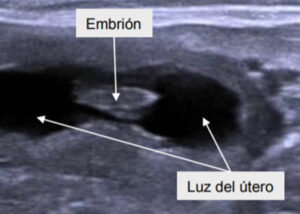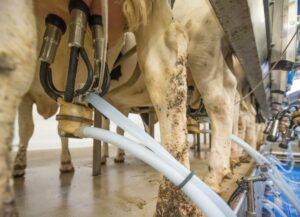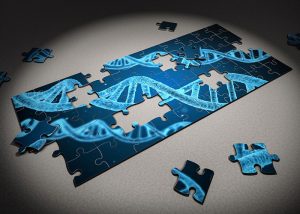Maria Villagrasa & Nuria Garcia
Dystocia is defined as a difficult birth and is used to designate a prolonged delivery or one in which the assisted extraction of the calf has been performed at calving. Dystocia has negative effects on the recently calved cow and leads to increased rates of neonatal calf deaths. In addition, it increases the prevalence of retained membranes, birth canal lesions, risk of maternal mortality, and postnatal calf morbidity and mortality. As a result, the prevention of dystocia is of crucial importance in the management of dairy farms.
The prediction of the onset of calving makes it possible to determine whether there is need for human intervention and, therefore, allows for the rescue of newborn calves and cows. Several methods have been recommended to predict the exact time of delivery, although the inaccuracy and practical limitations of some may limit their practicality.
Given the limited information on the performance of these devices on commercial dairy farms, a group of researchers from the University of Veterinary Medicine in Budapest, Hungary (Choukeir et al., 2020) conducted a study to assess the effectiveness of an intravaginal thermometer to predict calving.
Monitoring using an intravaginal thermometer
Five days before the expected date of delivery, 257 healthy pregnant cows were randomly selected and an intravaginal thermometer (experimental group) was inserted. At the same time, 116 pregnant cows were chosen as the control group. Once placed in the vagina, the thermometer sent SMS information about the expulsion.
In the cows of the experimental group, the start of the second stage of the delivery was determined by the SMS expulsion, while in the control cows this phase was controlled by the farm staff who checked the animals every 60 minutes.
Detection sensitivity 100%
The sensitivity of the thermometer to detect the calves’ ejection was 100% as no false alarms were detected in experimental animals. Thus, the second stage of delivery may be accurately detected by using intravaginal sensors on a dairy farm. It is also important to mention that the intravaginal thermometer did not induce any undesirable clinical signs.
Similar to previous studies, the animals of the experimental group needed less assistance (39.4% vs. 55.8%), and experienced less severe dystocia (score > 2; 3.7% vs. 5.3%), fetal death (0.8% vs. 10.6%), fetal membrane retention (9.5% vs. 28.3%), and clinical metritis (11.6% vs. 31.9%) compared to the cows in the control group.
Differences in the fetal death rate between the experimental group and the control could be explained by the farm’s standard operating procedure, i.e. after detecting the second stage of delivery, farm staff completed assistance within 90 minutes.
In the daily practice it is more difficult to detect the rapid onset of calving since the type of observations made (clinical changes in behavior, vaginal discharge with blood and/or the appearance of the amniotic sac or the calf’s hooves protruding from the vulva) do not allow it, which can cause a delay in assistance and, in turn, increase the rate of fetal deaths.
The authors also discussed the economic impact that dystocia can represent, which depending on its severity, can be very high. Since the initial investment in birth monitoring devices would be offset in the short term, the authors believed it would be advisable to use them on the farm.
Conclusions
The use of delivery alert systems, in this case the intravaginal thermometer, facilitates the control of the time of delivery and allows for immediate assistance. It also allows for the reduction in the number of cases of dystocia and improves the reproductive efficiency and postpartum health of the cow, as well as the survival of newborn calves by decreasing the prevalence of dystocia.
Reference
Choukeir, A.I., Kovács, L., Szelényi, Z., Kézér, L.F., Albert, E., Abdelmegeid, M.K., Baukje, A., Aubin-Wodala, M., Buják, D., Nagy, K., Szenci, O. Effect of monitoring the onset of calving by a calving alarm thermometer on the prevalence of dystocia, stillbirth, retained fetal membranes and clinical metritis in a Hungarian dairy farm. Theriogenology 145 (2020) 144e148.
© 2021 Dellait Knowledge Center. All Rights Reserved.











